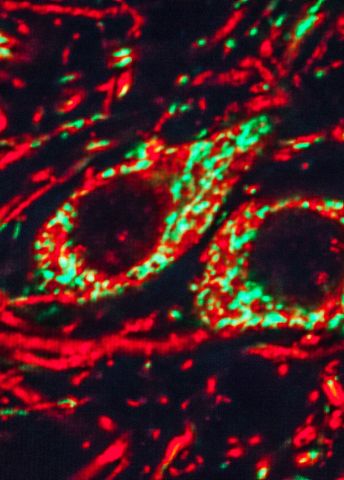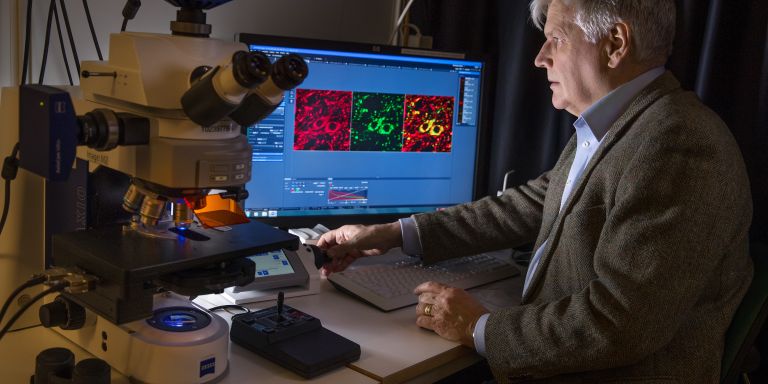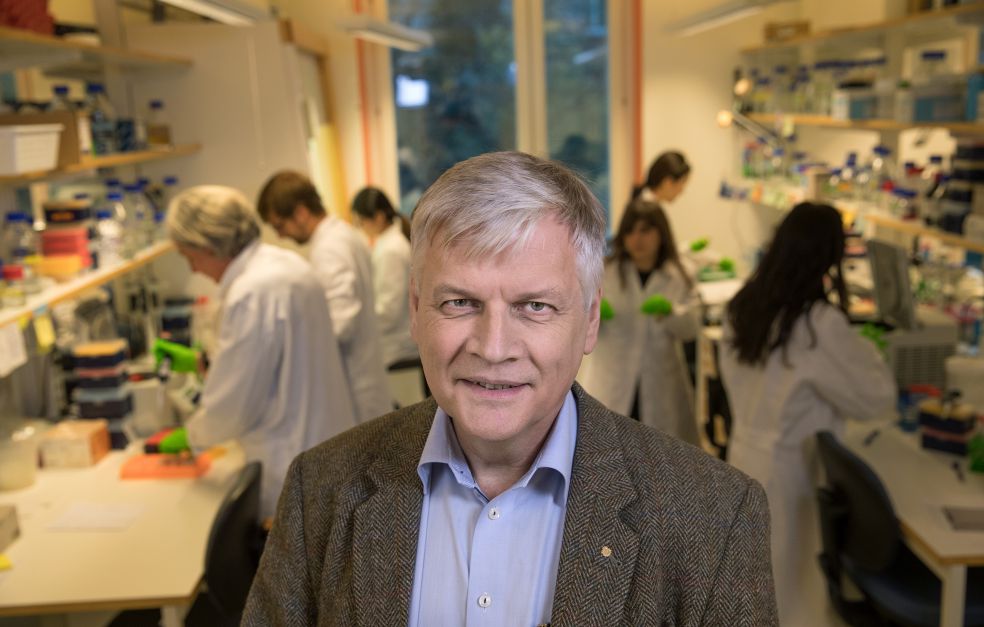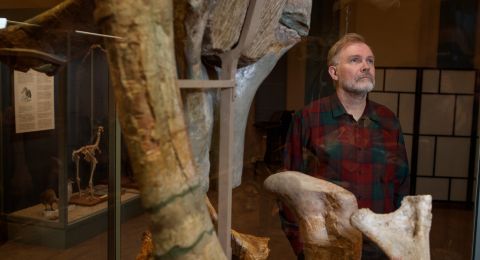
Project Grant 2016
Regulation of mammalian mtDNA gene expression
Principal investigator:
Nils-Göran Larsson, Professor of mitochondrial genetics
Institution:
Karolinska Institutet
Grant in SEK:
SEK 47 million over five years
For 30 years Nils-Göran Larsson has studied a central part of our cells – the mitochondria.
“I began working as a pediatrician, and came into contact with patients with hereditary mitochondrial diseases. They had problems with cellular energy supply, and developed diseases of the muscles, brain, heart and other organs. This inspired me to research into mitochondria, the cell’s powerhouse, and how they are linked to various medical conditions.”
In the laboratory at Karolinska Institutet in Solna, north of Stockholm, one thing that Larsson and his research team are trying to do is to find ways of stimulating mitochondria to be more efficient in supplying energy.
The age for onset of mitochondrial diseases can vary, he explains. Hopefully, a better understanding of pathological changes at cell level may lead to new therapies capable of helping children with serious genetic muscular diseases, involving impaired mitochondrial function, as well as age-related diseases such as type 2 diabetes and Parkinson’s disease.
Plenty left to discover
Just as we need fuel to drive a car, we must have energy to drive the cells in our bodies. Mitochondria are found in all cells that have cell nuclei. This is where the food we eat is converted into the energy currency molecule adenosine triphosphate (ATP) with the help of the oxygen we breathe.
“But even though mitochondria play such an important role in our bodies, and have been a topic of research since the 1920s, some very important things remain to be discovered,” Larsson comments.
One area of his research over the years has been mitochondrial DNA (mtDNA). Larsson explains that this is exclusively inherited only from the mother:
“There are very interesting but poorly understood mechanisms governing how mtDNA is inherited, and how genetic changes – mutations – are filtered out between generations.”
Mapping mtDNA regulation
With project funding from the Knut and Alice Wallenberg Foundation, Larsson will be continuing to study mtDNA, how mitochondrial processes work, and what sometimes goes wrong.
The research team is working in the lab, clad in white coats. They are using a combination of biochemistry, protein technology, and genetically modified mice and fruit flies. The aim is to understand how mtDNA is regulated, i.e. how mitochondrial genes are expressed in the cell.
“Hundreds of proteins are involved in regulation. We’re conducting experiments from different angles to dismantle the machinery inside mitochondria and understand how it works. We will use a number of complementary methods to build up a comprehensive picture.”
Among other things, they have used a mouse model to show that mtDNA mutations can trigger premature ageing.
“Although ageing does not have a single cause, impaired mitochondrial function plays an important role in humans.”
Finding treatment
Larsson still spends some of his time working as a doctor, and takes part in diagnosis of mitochondrial diseases, which can display a whole spectrum of symptoms.
“Symptoms range from a baby born with a life-threatening condition due to sharply elevated levels of lactic acid because of non-functioning mitochondria to someone in their seventies having problems with their eyesight and eye muscles.”
Treatment options are currently limited. Larsson hopes that better knowledge about how mtDNA is regulated will lead to new treatments.
“These patients often have a mixture of healthy and diseased mtDNA in a certain ratio. Once diseased mtDNA exceeds a certain proportion, the mitochondria no longer work. There are normally 1,000–2,000 copies of mtDNA in the cell. We have recently published a study showing that mtDNA mutations did not have as much impact if the total copy number was upregulated.”
The research team will be devoting much of its efforts to finding a key factor that regulates how mtDNA is copied.
“For various reasons, we know it exists, but we haven’t been able to isolate it. It’s probably a protein.”
Good to shake things up
After seven years as Director of the Max Planck Institute for Biology of Ageing in Cologne in Germany, Larsson returned to Sweden in 2015. He has continued to work with his German research colleagues. He has also begun collaborations at Karolinska Institutet that will hopefully lead to new discoveries.
“For researchers, a change of scene from time to time is stimulating. Routine is the enemy of research – you need a shake-up now and then, so you can find new approaches.”
So mitochondrial function is vital. Changes in it play a part not only in the onset of genetic and age-related diseases, but also in cancer. In Germany Larsson was part of a team that developed a chemical substance that inhibits mitochondrial function, for use in the treatment of certain tumors.
“The substance has been tested on mice carrying human tumors. This is an example of how more detailed understanding of the mitochondrial machinery will enable us to find ways to treat medical conditions.”
Text Susanne Rosén
Translation Maxwell Arding
Photo Magnus Bergström





